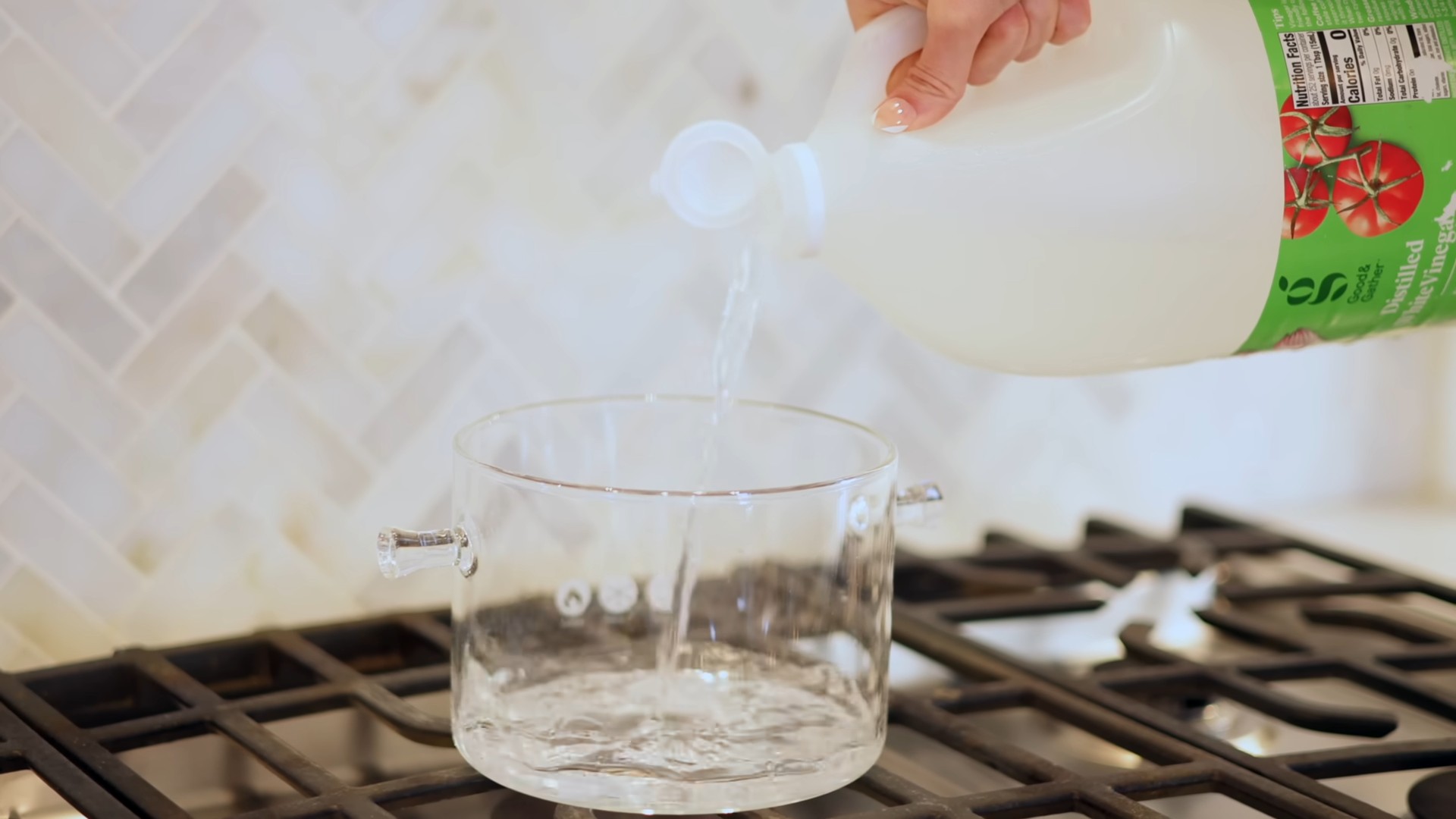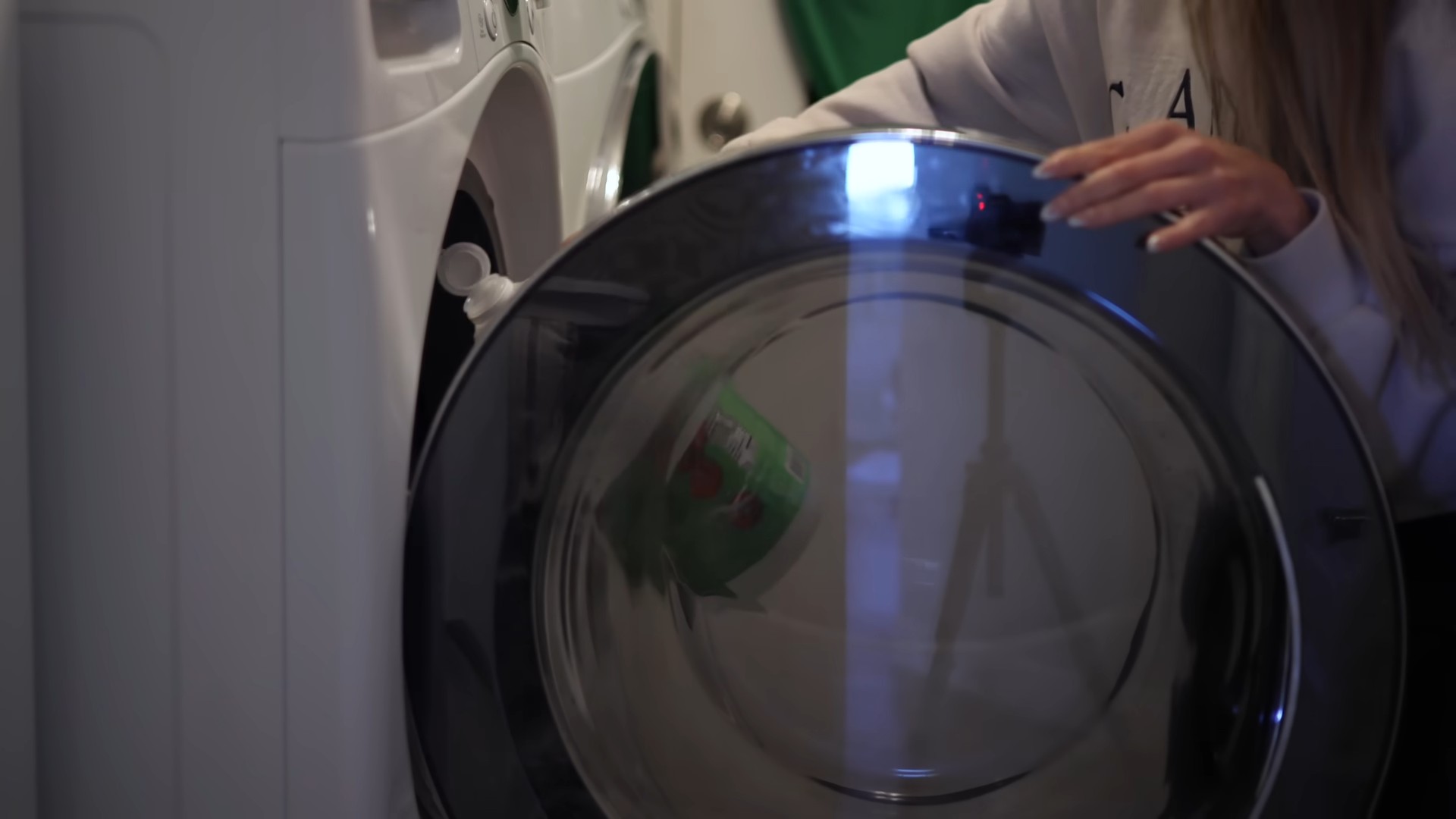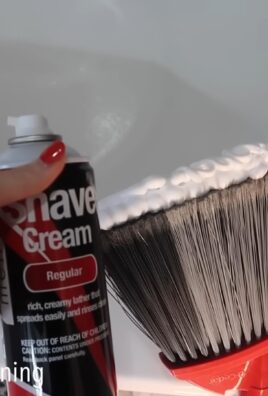Vinegar home hacks – who knew this humble kitchen staple could be your secret weapon to a sparkling clean home and a thriving garden? I’m constantly amazed by the versatility of vinegar, and I’m excited to share some incredible DIY tricks that will save you money and reduce your reliance on harsh chemicals.
For centuries, vinegar has been more than just a condiment. Ancient civilizations, from the Egyptians to the Romans, used vinegar for cleaning, preserving food, and even medicinal purposes. It’s a testament to its natural power and effectiveness that we’re still relying on it today. But let’s be honest, in our modern world, we often overlook these simple, time-tested solutions in favor of expensive, store-bought products.
That’s where these vinegar home hacks come in! Are you tired of battling stubborn stains, dealing with pesky weeds, or struggling to keep your cut flowers looking fresh? I know I am! This article is packed with easy-to-follow DIY projects that harness the cleaning, disinfecting, and even fertilizing power of vinegar. You’ll learn how to create your own all-purpose cleaner, banish mold and mildew, and even give your plants a boost – all with this one inexpensive ingredient. Get ready to unlock the full potential of vinegar and transform your home and garden with these simple, yet effective tricks!

Unlocking the Magic of Vinegar: Your Ultimate DIY Home Hack Guide
Hey there, fellow DIY enthusiasts! Get ready to be amazed by the sheer versatility of vinegar. This humble kitchen staple is a powerhouse when it comes to cleaning, deodorizing, and even tackling some surprising household problems. I’m going to walk you through some of my favorite vinegar hacks that will save you money and keep your home sparkling. Let’s dive in!
Cleaning Powerhouse: Vinegar as Your All-Purpose Cleaner
Vinegar’s acidity makes it a fantastic natural cleaner. It cuts through grease, grime, and hard water stains like a champ. Plus, it’s a much safer alternative to harsh chemical cleaners.
DIY All-Purpose Vinegar Cleaner
This is my go-to cleaner for almost everything!
What You’ll Need:
* Spray bottle
* White distilled vinegar
* Water
* Optional: A few drops of your favorite essential oil (lemon, lavender, or tea tree work great!)
Step-by-Step Instructions:
1. Mix the Solution: In your spray bottle, combine equal parts white distilled vinegar and water. For example, if you’re using a 16-ounce bottle, add 8 ounces of vinegar and 8 ounces of water.
2. Add Essential Oils (Optional): If you want to mask the vinegar smell, add a few drops (5-10) of your favorite essential oil. I personally love lemon for its fresh, clean scent.
3. Shake Well: Give the bottle a good shake to ensure the solution is properly mixed.
4. Spray and Wipe: Spray the solution onto the surface you want to clean and let it sit for a minute or two. Then, wipe it clean with a damp cloth or sponge.
5. Rinse (If Necessary): For some surfaces, like glass, you might want to rinse with clean water after wiping to prevent streaks.
Where to Use It:
* Countertops (except granite and marble – more on that later!)
* Sinks
* Showers and bathtubs
* Floors (test in an inconspicuous area first)
* Appliances (exterior)
Tackling Tough Stains: Vinegar to the Rescue
Vinegar is a stain-fighting superhero! From coffee spills to stubborn mildew, it can handle a wide range of messes.
Removing Coffee and Tea Stains from Mugs
Those unsightly coffee and tea stains in your favorite mugs are no match for vinegar!
What You’ll Need:
* White distilled vinegar
* Salt (optional, for extra scrubbing power)
* Sponge or scrub brush
Step-by-Step Instructions:
1. Pour Vinegar into the Mug: Pour enough white distilled vinegar into the mug to cover the stains.
2. Let it Soak: Let the vinegar soak for at least 30 minutes, or even overnight for really stubborn stains.
3. Scrub (If Necessary): If the stains are still present after soaking, sprinkle a little salt into the mug and use a sponge or scrub brush to gently scrub the stains away. The salt acts as a mild abrasive.
4. Rinse Thoroughly: Rinse the mug thoroughly with warm water and soap to remove any remaining vinegar and salt.
Fighting Mildew in the Bathroom
Mildew in the bathroom is a common problem, but vinegar can help keep it at bay.
What You’ll Need:
* Spray bottle
* White distilled vinegar
* Scrub brush or sponge
Step-by-Step Instructions:
1. Spray the Affected Area: Spray undiluted white distilled vinegar directly onto the mildewed area.
2. Let it Sit: Let the vinegar sit for at least an hour, or even longer for heavy mildew growth.
3. Scrub and Rinse: Scrub the area with a scrub brush or sponge to remove the mildew. Rinse thoroughly with water.
4. Repeat if Necessary: For stubborn mildew, you may need to repeat the process.
Important Note: Always test vinegar in an inconspicuous area before applying it to a larger surface, especially on colored grout or painted surfaces.
Deodorizing Magic: Banish Unwanted Odors with Vinegar
Vinegar is a natural odor absorber, making it perfect for eliminating unpleasant smells around your home.
Freshening Up Your Dishwasher
Dishwashers can sometimes develop a funky odor. Vinegar can help keep them smelling fresh.
What You’ll Need:
* White distilled vinegar
* Dishwasher-safe bowl or cup
Step-by-Step Instructions:
1. Place Vinegar in the Dishwasher: Fill a dishwasher-safe bowl or cup with one cup of white distilled vinegar.
2. Place on Top Rack: Place the bowl or cup on the top rack of your empty dishwasher.
3. Run a Hot Cycle: Run a hot, empty cycle. The vinegar will help to deodorize and clean the dishwasher.
Eliminating Refrigerator Odors
A smelly refrigerator is never fun. Vinegar can help absorb those lingering odors.
What You’ll Need:
* Small bowl
* White distilled vinegar
Step-by-Step Instructions:
1. Fill the Bowl with Vinegar: Fill a small bowl with about half a cup of white distilled vinegar.
2. Place in the Refrigerator: Place the bowl in the refrigerator and leave it there for a few days. The vinegar will absorb the odors.
3. Replace as Needed: Replace the vinegar every few days, or as needed, until the odors are gone.
Vinegar in the Laundry Room: A Natural Fabric Softener and Stain Remover
Vinegar can be a surprisingly effective addition to your laundry routine.
Using Vinegar as a Fabric Softener
Skip the chemical-laden fabric softeners and use vinegar instead!
What You’ll Need:
* White distilled vinegar
Step-by-Step Instructions:
1. Add Vinegar to the Rinse Cycle: Add about 1/2 cup of white distilled vinegar to the fabric softener dispenser of your washing machine.
2. Run the Wash Cycle: Run your wash cycle as usual. The vinegar will help to soften your clothes and remove any lingering detergent residue.
Don’t worry, your clothes won’t smell like vinegar! The smell dissipates as they dry.
Boosting Laundry Detergent
Adding vinegar to your wash can help boost the effectiveness of your laundry detergent, especially for heavily soiled clothes.
What You’ll Need:
* White distilled vinegar
* Laundry detergent
Step-by-Step Instructions:
1. Add Vinegar to the Wash: Add about 1/2 cup of white distilled vinegar to your washing machine along with your regular laundry detergent.
2. Run the Wash Cycle: Run your wash cycle as usual. The vinegar will help to brighten colors and remove stains.
Gardening with Vinegar: Weed Killer and Soil Amendment
Vinegar can even be used in the garden!
DIY Weed Killer
A simple vinegar solution can help kill weeds naturally.
What You’ll Need:
* Spray bottle
* White distilled vinegar
* Optional: Dish soap (a few drops)
Step-by-Step Instructions:
1. Mix the Solution: Pour undiluted white distilled vinegar into a spray bottle. Add a few drops of dish soap (optional). The dish soap helps the vinegar stick to the weeds.
2. Spray the Weeds: Spray the vinegar solution directly onto the weeds, being careful not to spray any desirable plants.
3. Repeat as Needed: Repeat the application as needed, especially after rain.
Important Note: Vinegar is a non-selective herbicide, meaning it will kill any plant it comes into contact with. Use it carefully and avoid spraying it on plants you want to keep.
Acidifying Soil for Acid-Loving Plants
Some plants, like azaleas and blueberries, thrive in acidic soil. Vinegar can help lower the pH of your soil.
What You’ll Need:
* White distilled vinegar
* Water
* Watering can
Step-by-Step Instructions:
1. Mix the Solution: Mix 1 tablespoon of white distilled vinegar with 1 gallon of water.
2. Water the Plants: Water your acid-loving plants with the vinegar solution.
3. Test the Soil: Test the soil pH regularly to ensure it stays within the desired range.
Use this solution sparingly, as too much vinegar can harm your plants.
Important Precautions and Considerations
While vinegar is a fantastic natural cleaner, there are a few things to keep in mind:
* Don’t Use on Granite or Marble: Vinegar’s acidity can etch and damage natural stone surfaces like granite and marble.
* Test in an Inconspicuous Area: Always test vinegar in

Conclusion
So, there you have it! This simple yet incredibly effective DIY trick using vinegar is a game-changer for anyone looking to simplify their cleaning routine and embrace a more natural approach to home maintenance. We’ve explored how the humble bottle of vinegar can be transformed into a powerful cleaning agent, a deodorizing marvel, and even a fabric-softening wonder. It’s not just about saving money (though that’s a definite perk!); it’s about reducing your reliance on harsh chemicals and creating a healthier living environment for yourself and your family.
The beauty of this **vinegar home hack** lies in its versatility. Feel free to experiment with different essential oil combinations to create custom scents that suit your preferences. Lavender and lemon offer a calming and refreshing aroma, while tea tree oil adds an extra layer of antibacterial power. You can also adjust the vinegar-to-water ratio to suit the specific task at hand. For tougher stains or odors, a stronger vinegar solution might be necessary.
Don’t be afraid to get creative! Consider infusing your vinegar with citrus peels or herbs for added cleaning power and a delightful fragrance. A few orange peels soaking in vinegar for a week can create a potent and naturally scented cleaner perfect for tackling greasy surfaces. Similarly, rosemary or thyme infusions can add a herbal touch to your cleaning routine.
We understand that trying new things can sometimes feel daunting, but we wholeheartedly encourage you to give this DIY vinegar trick a try. The results are truly remarkable, and we’re confident that you’ll be amazed by the cleaning power of this simple solution.
But the real magic happens when you share your experiences! We’d love to hear how this vinegar hack worked for you. Did you discover a new and innovative use for it? Did you find a particular essential oil combination that you absolutely love? Share your tips, tricks, and stories in the comments below. Let’s create a community of vinegar enthusiasts who are passionate about natural cleaning and sustainable living.
This isn’t just about cleaning; it’s about empowering ourselves to take control of our homes and our health. By embracing simple, natural solutions like this vinegar hack, we can create a cleaner, healthier, and more sustainable future for ourselves and generations to come. So, grab that bottle of vinegar, get creative, and let’s start cleaning! We can’t wait to hear about your vinegar adventures!
Ready to ditch the harsh chemicals and embrace the power of vinegar?
Don’t wait any longer! Start experimenting with this amazing DIY trick today and discover the countless benefits of using vinegar in your home. You’ll be amazed at how effective, affordable, and eco-friendly it is.
Share Your Success!
Remember to share your experiences and tips in the comments below. Let’s learn from each other and create a community of vinegar-loving home cleaners!
Frequently Asked Questions (FAQs)
What kind of vinegar should I use for cleaning?
White distilled vinegar is the best option for cleaning. It’s inexpensive, readily available, and has a high acidity level, making it effective at killing bacteria, removing grime, and dissolving mineral deposits. Avoid using other types of vinegar, such as apple cider vinegar or balsamic vinegar, as they may contain sugars or coloring that could stain surfaces. While apple cider vinegar has its own set of benefits, white distilled vinegar is the champion for general cleaning purposes.
Is vinegar safe to use on all surfaces?
While vinegar is a versatile cleaner, it’s not suitable for all surfaces. Avoid using it on natural stone surfaces like marble, granite, and limestone, as the acidity can etch and damage them. It’s also best to avoid using vinegar on waxed wood furniture, as it can strip the wax finish. Be cautious when using vinegar on electronics, as moisture can cause damage. Always test a small, inconspicuous area before applying vinegar to a larger surface. For delicate surfaces, dilute the vinegar with more water.
Can I mix vinegar with bleach?
Never, ever mix vinegar with bleach! This combination creates chlorine gas, which is highly toxic and can cause serious respiratory problems, burns, and even death. Always use vinegar and bleach separately and never in the same container or application. Safety should always be your top priority when cleaning.
How do I get rid of the vinegar smell?
The vinegar smell can be a deterrent for some, but it dissipates quickly. To minimize the odor, ensure proper ventilation by opening windows or turning on a fan. You can also add a few drops of your favorite essential oil to the vinegar solution to mask the smell. Citrus oils like lemon and orange are particularly effective at neutralizing the vinegar scent. The smell will usually disappear within an hour or two.
Can I use vinegar to clean my laundry?
Yes, vinegar is a fantastic laundry booster and fabric softener. Add about 1/2 cup of white distilled vinegar to your washing machine’s fabric softener dispenser. It will help to soften clothes, remove odors, and brighten colors. Vinegar can also help to remove soap residue from your washing machine, keeping it clean and efficient. It’s a natural and eco-friendly alternative to commercial fabric softeners.
How often should I clean with vinegar?
The frequency of cleaning with vinegar depends on your needs and preferences. For general cleaning tasks like wiping down countertops and cleaning floors, you can use vinegar several times a week. For more intensive cleaning tasks like descaling appliances or removing stubborn stains, you may only need to use vinegar occasionally. Listen to your home and adjust your cleaning schedule accordingly.
Can vinegar kill mold?
Yes, vinegar is effective at killing mold and mildew. Spray undiluted white distilled vinegar onto the affected area and let it sit for about an hour. Then, scrub the area with a brush and rinse with water. Vinegar is particularly effective at killing common household molds like black mold. However, for severe mold infestations, it’s best to consult with a professional mold remediation service.
What are some other uses for vinegar in the home?
Vinegar has a wide range of uses beyond cleaning. It can be used to:
* Descale coffee makers and kettles.
* Clean showerheads and faucets.
* Remove hard water stains from glassware.
* Deodorize garbage disposals.
* Clean windows and mirrors.
* Remove stickers and adhesive residue.
* Freshen up cut flowers.
* Weed killer in the garden (use with caution).
The possibilities are endless!
Is it safe to use vinegar around pets and children?
Vinegar is generally considered safe to use around pets and children, but it’s important to take precautions. Keep vinegar solutions out of reach of children and pets to prevent accidental ingestion. While vinegar is not highly toxic, it can cause irritation if ingested in large quantities. Ensure proper ventilation when cleaning with vinegar to avoid inhaling concentrated fumes. If you have any concerns, consult with your veterinarian or pediatrician.
How do I store my homemade vinegar cleaning solutions?
Store your homemade vinegar cleaning solutions in labeled spray bottles or containers. Keep them in a cool, dark place away from direct sunlight. It’s best to use glass or plastic bottles that are specifically designed for storing cleaning solutions. Avoid using metal containers, as vinegar can react with some metals. Properly stored vinegar cleaning solutions can last for several months.




Leave a Comment